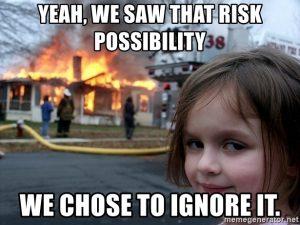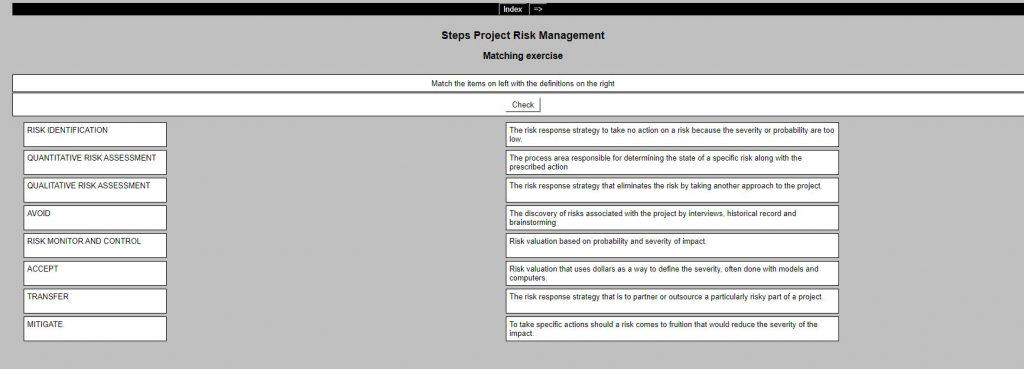Risk Management from Front and to Back
Risk Management from Front and Back
Recently I spoke at a Metrolina PMI Chapter on Risk Management. If we have been managing projects, we know that risk management is significant to ensuring project success. Risk management starts from the very beginning of the project, the scope, and our strategy selection will all impact the risks to which the project will be subjected.
The Steps
Risk management is a collection of processes described below. The approach below is common, and depending upon our level of diligence, from experience, is a competent approach to understanding and addressing project risks.
- Identify
- Assess
- Qualitative
- Quantitative
- Response
- Avoid – do something different
- Mitigate – take actions to reduce severity or probability
- Accept – do nothing
- Transfer – outsource
- Monitor and Control
An example of some of the puzzles we use in our classes.
From Front
In the above process, we start with identifying the things that can go wrong and assessing potential impact. We start at the front, consider the strategies, tactics, tasks that can go wrong and assess the individual, impact on our desired project result or project objective.
We ask forward questions like:
- What if a supplier delivers late?
- What if regulations change?
To Back
Another alternative, that might not be so well known, is to do a pre-mortem. An analog of the premortem is the thought experiment ala, Albert Einstein. You might be familiar with post mortems for projects, which is an after-project activity that we use as a lesson-learned approach. We can apply this same approach to project risk, well before the end of the project. In the premortem, we think of the things at the end that we do not want to happen, then work our way backward, what event or more importantly, a combination of events can happen that will give us this undesirable result.
Questions backward
- The project is not able to deliver the product within the market window expected?
- What things can cause this outcome?
Final Thoughts
To be sure all events that can cause difficulty cannot be determined. We must balance the amount of time we spend on risk identification, with the reward for doing so, which is the avoidance of project trauma due to poor risk identification and management. Looking forward and at specific failures along the way, provides us with single-point failures, whereas looking at the end failure, opens us up for combinations or interactions that can produce these undesired results. The reality is seldom is the cause of a project failure the result of a single event, but a conflagration of events.
Complex things require us to consider more than one approach to our challenges. We have all heard about the need for diversity, but it is not about eye color or left-handed or right-handed. This is the reason for multiple approaches (different perspectives) to identifying those things that can go wrong and destroy our project’s ability to meet the desired result. More importantly, we may find that the risks are too high and we should not proceed further with the project.
Questions forward:
- What happens when a supplier is late?
- What happens when the quality of supplier delivery is poor?
Questions backward
- The project is not able to deliver the product within the market window expected?
But Wait, There’s More
We have started a taxonomy of risk for a book we are writing with Glen Alleman If you have ideas for how to uncover and organize the potential risks via this taxonomy, please contribute. Those that contribute will get their names in the book.
We appreciate any follow on our LinkedIn page.
https://www.linkedin.com/company/value-transformation-llc


